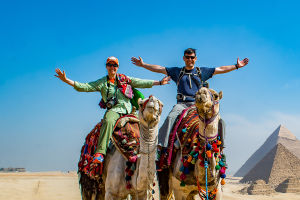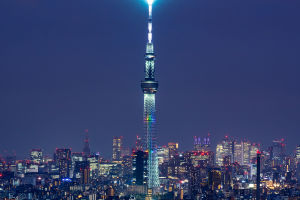If you've ever dreamed of walking through a desert canyon to find an ancient city carved into rose-red stone, Petra will exceed every expectation.
Located in Jordan, Petra is more than a postcard image of the Treasury—it's a sprawling archaeological wonder with layers of history, cultural beauty, and physical challenge.
Whether you're planning your first trip or refining your itinerary, here's a complete and practical guide to visiting Petra.
Understanding Petra: A Brief Introduction
Petra, also known as the "Lost City," was the capital of the Nabataean Kingdom over 2,000 years ago. The city flourished as a trading hub for incense, spices, and silk, linking Arabia, Egypt, and the Mediterranean world. Today, it's a UNESCO World Heritage Site and one of the New Seven Wonders of the World, attracting travelers, historians, and photographers alike.
When to Visit: Timing Makes All the Difference
The best times to visit Petra are spring (March–May) and autumn (September–November) when temperatures are mild and walking long distances isn't exhausting. Summer can be extremely hot, with temperatures soaring over 35°C (95°F), and winter nights can be quite cold.
Opening Hours:
• Summer: 6:00 a.m. to 6:00 p.m.
• Winter: 6:00 a.m. to 4:00 p.m.
These hours apply daily, including holidays. Plan to enter early to beat the crowds and heat.
Tickets and Entry Fees: What to Know
Petra's ticketing system is straightforward but offers discounts for overnight stays.
Ticket prices:
1. 1-Day Pass: 50 JOD (~$70)
2. 2-Day Pass: 55 JOD (~$77)
3. 3-Day Pass: 60 JOD (~$84)
If you're staying at least one night in Jordan, you'll get the above rates. Otherwise, day-trippers pay a higher price (90 JOD or ~$126).
Tip: Always bring your passport for verification, and consider buying tickets in advance via the Jordan Pass, which bundles visa fees and site entry and can save you money if you're visiting multiple attractions.
Planning Your Route: How to Explore Smart
Petra is vast—over 60 square kilometers—so it's important to plan your route based on your time and physical ability.
1. The Siq and Treasury (Al-Khazneh)
This narrow, winding gorge (about 1.2 km) leads to the iconic Treasury. Walk early in the morning when the light hits the façade perfectly and crowds are thin.
2. Street of Facades, Royal Tombs, and the Theater
As you continue, you'll encounter large tombs and carved chambers. These areas offer great photo ops and fewer people.
3. The Monastery (Al-Deir)
To reach the Monastery, prepare for a challenging hike: 800 steps carved into stone. It's quieter than the Treasury and just as stunning. Bring water and take your time.
4. High Place of Sacrifice
This steep climb rewards you with panoramic views of Petra and offers a peaceful break from the main tourist paths.
Getting There: Transportation Tips
Petra is located near the town of Wadi Musa, which is the base for most visitors.
- By Bus:
The JETT Bus from Amman to Petra runs daily and costs about 11 JOD (~$16). It leaves around 6:30 a.m. and returns around 5:00 p.m.
- By Taxi:
Private taxis from Amman cost between 70–100 JOD (~$98–140), depending on negotiation.
- By Rental Car:
Driving from Amman takes about 3.5 hours. The road is straightforward, and having your own car offers flexibility.
Staying Overnight: Where to Sleep
Wadi Musa has a wide range of accommodations to suit every budget.
Budget Options:
• Valentine Inn (14 JOD / ~$20) – Basic rooms, great views, and free shuttle to Petra.
• Al-Anbat Hotel (11 JOD / ~$16) – Simple, clean rooms with friendly staff and a convenient location near Petra.
Mid-range Picks:
• Petra Moon Hotel (45 JOD / ~$63) – Walking distance to the entrance, rooftop views, comfortable rooms.
• Petra Guest House Hotel (50 JOD / ~$70) – Right at the entrance of Petra, cozy atmosphere, and an on-site cave lounge.
Luxury Experience:
• Mövenpick Resort Petra (120 JOD / ~$169) – Located just outside the gate with excellent service and local design.
• Mövenpick Nabatean Castle Hotel (130 JOD / ~$183) – A stunning hilltop retreat with panoramic views, elegant rooms, and a free shuttle to Petra.
What to Eat: Local Delights in Petra
After a long day of hiking and exploring, you'll want a filling meal. Jordanian food is flavorful and often plant-based, perfect for recharging.
1. Mansaf – Jordan's national dish featuring tender lamb cooked in jameed (fermented yogurt sauce), served over rice and topped with almonds or pine nuts. Traditionally eaten communally from a large tray, it’s a must-try for meat lovers (8–12 JOD / ~$11–$17).
2. Falafel & Hummus – Common in local eateries; great vegetarian option (2–4 JOD / ~$3–$6).
3. Zarb – A unique Bedouin barbecue: chicken or lamb, vegetables, and rice slow-cooked in an underground sand pit for hours (15–25 JOD / ~$21–$35).
Other Helpful Tips for Visiting Petra
1. Wear proper footwear.
You'll walk a lot—often on uneven stone—so bring sturdy shoes or hiking sandals.
2. Bring water and sun protection.
Shade is limited. A hat, sunscreen, and at least 1.5 liters of water are a must.
3. Don't rush.
Trying to see everything in one day is exhausting. Ideally, spend at least two days to explore both main and hidden trails.
4. Petra by Night.
On Mondays, Wednesdays, and Thursdays, Petra opens from 8:30 to 10:30 p.m. for a candlelit experience. Tickets cost 17 JOD (~$24). It's magical—but often crowded.
Petra is not just a destination—it's an experience that stays with you. From the moment you step through the Siq to your final glance at the Al-Deir, the sense of wonder is constant. Have you been to Petra, or is it on your dream list? Share your thoughts or ask a question—every traveler's insight makes the next journey even better!


